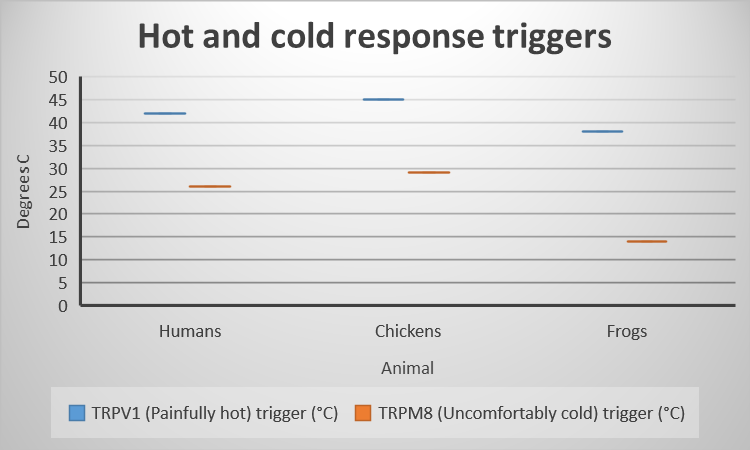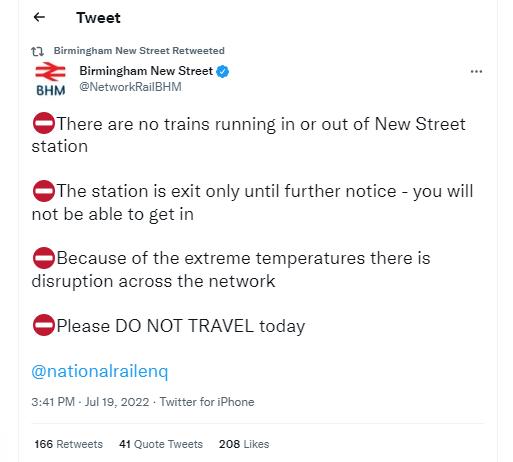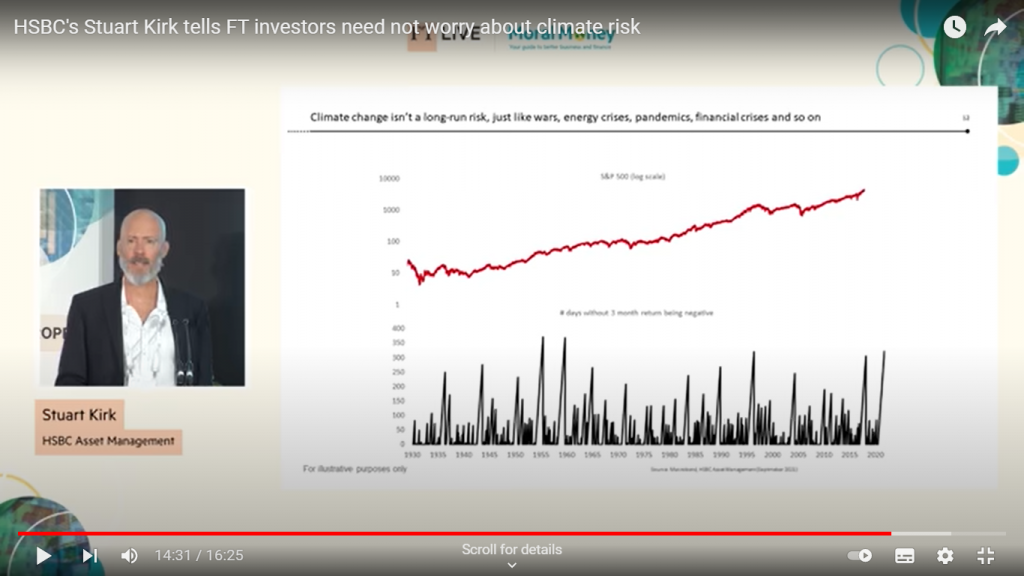
In January this year, the southern hemisphere experienced, in some cases, record-breaking heatwaves, with temperatures reaching 50.7° C in Western Australia. In the last few weeks, it has been the turn of the northern hemisphere.
In the UK this week, we recorded the highest day (40.3° C in Coningsby in Lincolnshire) and night (25.8° C in Kenley in Surrey) temperatures ever. What is clear is that climate change has already significantly changed the probabilities of extreme weather events occurring in the UK, meaning that our own past experiences of weather ranges and likelihoods are now out of date.

This is likely to have many consequences. This week our railways literally went into meltdown in places, with New Street operating an “exit only” policy for a period while no trains were running to or from the station at all. Overhead cables were damaged, requiring lengthy repair work and buckling rails led to widespread speed restrictions across the network. This is because the heat tolerances of our railway system were set in cooler times, meaning that most of the network can operate up to around 46° C. As track temperatures can be up to 20° hotter than air temperatures, this threshold was widely exceeded.
So, if our infrastructure has limits, what about life on the planet? Well yes, in animals these are controlled by proteins called TRP channels, which allow neurons to be stimulated at temperatures which would be immediately extremely harmful to the organisms concerned. A few of these are shown above. In humans, this is a body temperature of around 42° C (a healthy temperature is around 37° C and our bodies work hard to keep it there, but we starts to feel unwell from 37.8° C upwards and may become comatose at 42° C. We are likely to die or at least suffer serious brain damage at 43° C), but the hot and cold limits vary hugely between different species. So rapid changes in the temperature distributions means that habitable areas, which would need to be at temperatures well short of these limits, for a wide range of animals and plants will also be changing rapidly, requiring migration or extinction for many.
In humans, where we have more control over our environments, we will still need to adapt many of our practices, from how we construct our infrastructure, to how we use resources and spend our time. One obvious question that has come up this week is why we don’t have a maximum workplace temperature (currently we don’t have a minimum either, although we do have guidance around minimum temperatures). The House of Commons Library Briefing Note on this from 2010 can be found here.
In Germany, a maximum of 26°C is the norm but the guidelines state that, if the outside temperature is higher, a workplace temperature may in certain circumstances be higher than 26°C.
In Spain, Real Decreto 486 of 1997 lays down that, in places where sedentary work takes place, the temperature should be between 17 and 27°C. In places of light physical work, an acceptable temperature will be between 14 and 25°C, although there are some limitations and conditions around these requirements.
There are clearly complications around setting a maximum comfort level which would probably also need to account for humidity and activity, but the Health and Safety Executive have suggested 30° C in their guidance as a maximum acceptable temperature, less if the work is strenuous. They also suggest polling employees to see if a particular temperature is comfortable, making adjustments if more than 10% are uncomfortable in an air-conditioned office.
There are now renewed calls to introduce a maximum workplace temperature in law. And, as Lord Turner so eloquently put it on Sky News, this is at only 1.2°C warming. If all of the promises made at Glasgow are kept we may stay between 1.8°C and 2.5°C. However in the UK, the Climate Change Committee, the body set up specifically to monitor our compliance with our climate commitments, has already said that our current programmes will not deliver net zero. And Liz Truss, who may be Prime Minister in 6 weeks, has vowed to halt the only green levies we have so far been able to put into law.
In the meantime, it appears to be a great time to be a Melanophila, or fire-chasing, beetle.


